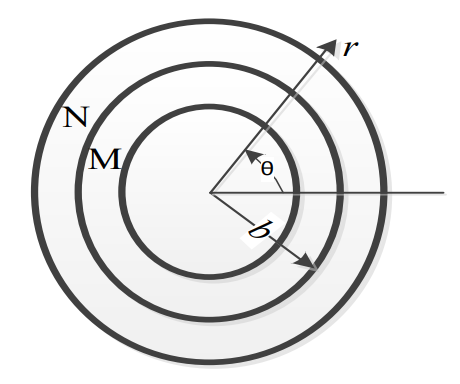Question
Consider two concentric circular cylinders of different materials M and N in contact with each other at r = b, as shown below. The interface at r = b is frictionless. The composite cylinder system is subjected to internal pressure P. Let (urM ,uθM) and (σrrM σθθM) denote the radial and tangential displacement and stress components, respectively, in material M. Similarly, (urN ,uθN) and (σrrN σθθN) denote the radial and tangential displacement and stress components, respectively, in material N. The boundary conditions that need to be satisfied at the frictionless interface between the two cylinders are :
Options :
urM = urN and σrrM= σrrN and uθM = uθN and σθθM = σθθN
σrrM= σrrN and σθθM= σθθN only
uθM = uθN and σθθM = σθθN only
urM = urN and σrrM= σrrN only
Answer :
urM = urN and σrrM= σrrN only
Solution :
Due to fluid pressure both the cylinder will remain in contact, so radial displacement and radial stress will be same at interface. But due to frictionless surface both the cylinder can slip tangentially, therefore tangential displacement and tangential stress will be different.

